Stuffed Fables is a two to four player co-operative story book adventure game from Z-MAN Games. The narrative focuses on the trials and tribulations of one little girl and the stuffed animals who quest at night to protect her. Evil monsters have started coming out from under the bed to complicate the life of the little girl, and Thea, her teddy bear. Throughout the story players will take on the role of Thea and her fellow stuffies using their unique abilities to battle monsters and solve mysteries across “The Fall” (a magical realm under the bed) in order to keep their little girl happy.
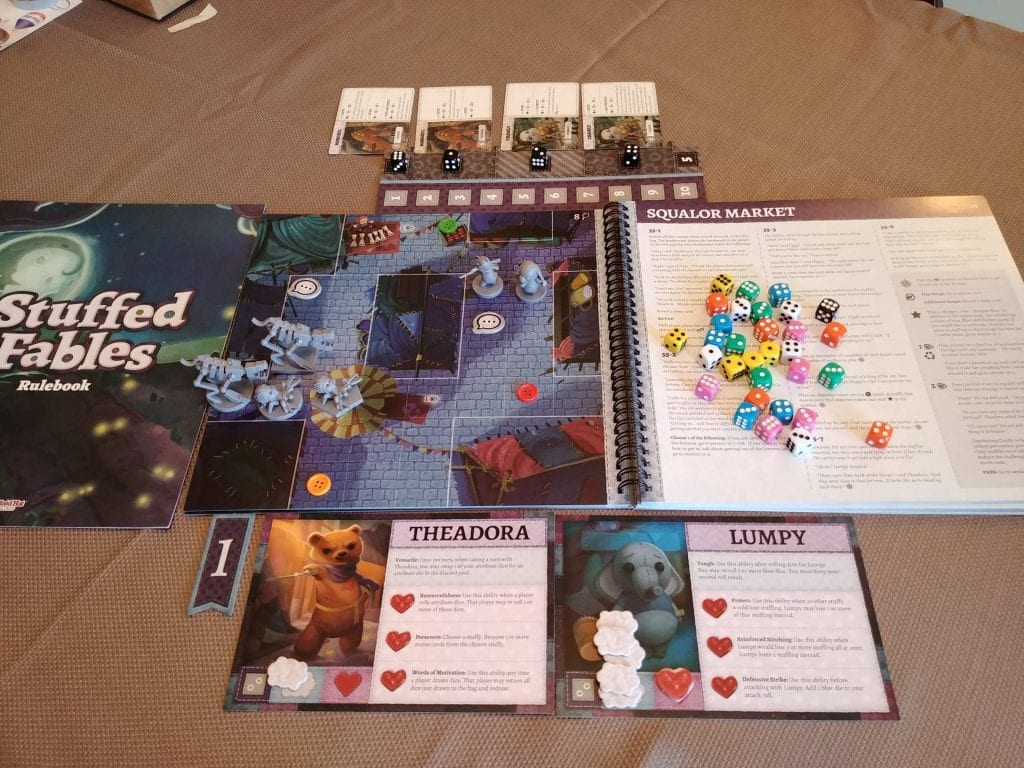
Stuffed Fables’ unique format as a story book game lends itself well to this narrative. A story book game is a board game where most of what a player needs lives within a central book. One page contains the map where players will have combat and encounter various NPCs, while the other page contains the story’s narrative, the rules, the goal for the scenario and anything else connected to story progression.
Welcome to Tim Burton’s Winnie the Pooh

Tonally this feels like a much more grown-up Winnie the Pooh in a Tim Burton world, combined with the tension of the Dark Souls board game. The villain, Crepitus, has enslaved the lost toys of The Fall and makes them work in his factory. He is also the source of the little girl’s troubles, as his machines bring her nightmares and steal her favourite belongings.
Each night, or game chapter, players have a limited amount of time to battle foes, solve mysteries and navigate interesting areas. There are also NPC encounters which can affect how the scenario progresses. Players become invested in trying to talk to, and help, as many toys as they can on their missions. As players progress through the game, cards will be drawn from the Sleep Deck which can impact what happens in the story.
Playing Under the Bed
Stuffed Fables uses a system which features seven different coloured dice; each one allows the character to do something different. Red is used for melee combat, blue for specials, green for ranged attacks, yellow for searching the map for clues, white for healing stuffing, black for summoning enemies, and wild purple dice. All players pull five dice from the same bag at the start of their turn to complete their actions. When the bag is empty, or all the black dice representing enemy actions have been drawn, the bag is refreshed. In combat the enemies get their own turn when a certain number of black dice have been pulled. In this way each turn’s pull of the dice draws the whole table’s attention as players desperately hope to get as many actions as possible before the enemies ruin their plans.
When something bad happens in the story players risk waking up the little girl by drawing additional Sleep Cards. If she wakes up the session is over, and players read the “failed adventure” ending for that chapter. This puts a lot of pressure on the players to achieve their goals quickly and safely.
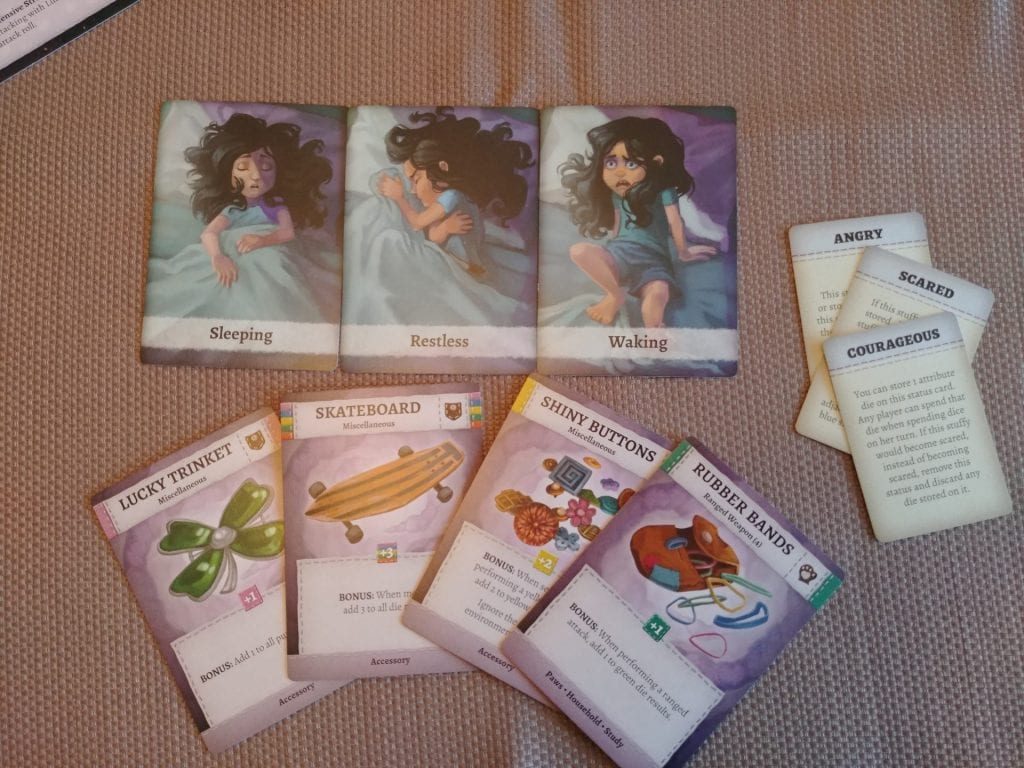
You do not want to be responsible for breaking a little girl’s heart. For example, when our group failed a mission our little girl woke up from a nightmare having wet the bed, and it was all our fault. On the other hand, when the group does succeed there is a strong feeling of satisfaction for everyone involved.
However, the semi-random nature of the Sleep Deck can end a session before it really starts. In one situation our group had so many bad dice pulls and card draws that the scenario was over in ten minutes. This was the one time we started a scenario over. Either way, everyone at the table was always waiting to see what would happen next, which is a good sign for the quality of writing and storytelling.
Too Spooky for Bedtime
Stuffed Fables is marketed as a game for families, but the 7+ rating might not reflect the required emotional maturity the game’s story demands; there are some very dark themes. The game might be suited more towards a 10+ range as the tactical nature of combat is fun but also challenging. This being a story book game, there will be a lot of reading, so groups will get out of the narrative what they put into it. Our group did different voices for each of the characters which helped to bring them all to life.
Misfit Toys, Minis and Monsters
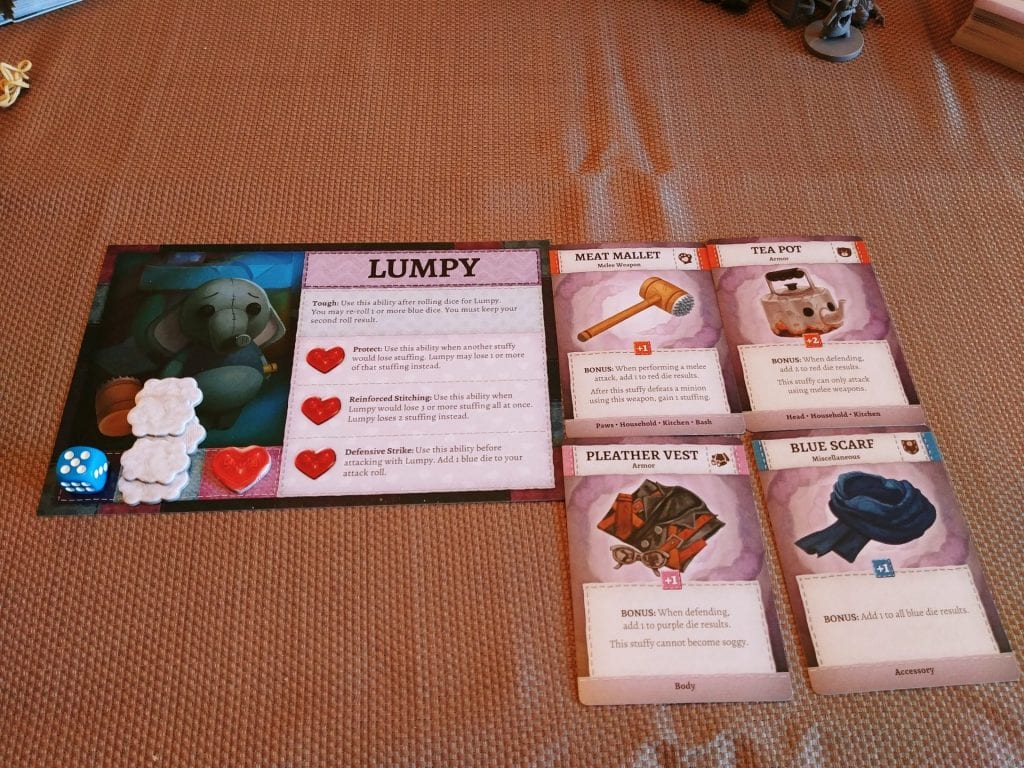
The art of Stuffed Fables is extremely well done. The character sheets are laid out well, as is the story book itself. Our group liked the maps for each chapter as they really set the mood for the dark world of The Fall and made us feel vulnerable and small. Each of the characters is loveable in their own way. However, as new characters were added it became clear that some characters were more useful than others. Our group loved Lumpy, Flopps and Lionel while feeling obligated to bring along Thea. Stitch, one of the starting stuffies, and Piggle, just don’t have comparable abilities. There are items players can equip their stuffed hero with to alter their stats, and these are charming, but ultimately Piggle is still Piggle.
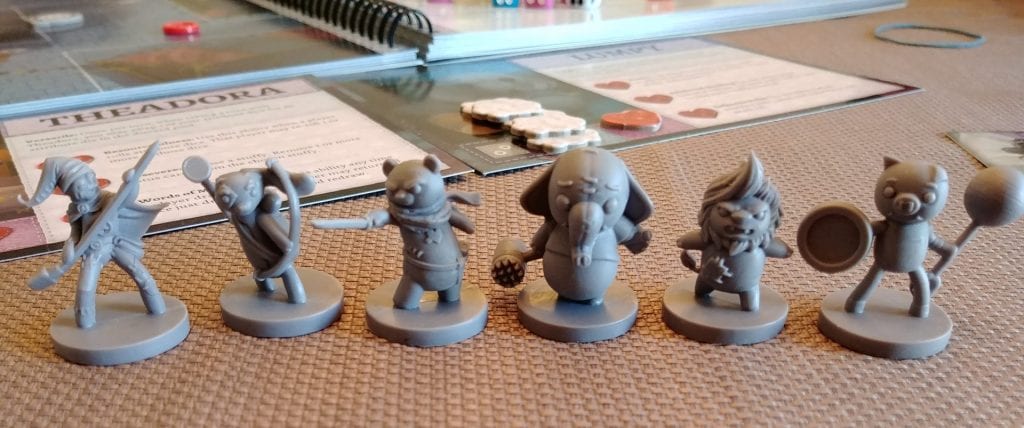
The miniatures in Stuffed Fables are simple, adorable and inspire the imagination. A quick search of Stuffed Fables on BoardGameGeek will provide countless pictures of painted models, which demonstrates how much people love these characters. The only drawback to the minis is the way developers designed the common enemies. Each one has a differently shaped base, mainly so players can quickly identify which enemy is moving and especially which one is the elite bad guy. This was probably done as a cost-saving measure; however, it would have been nice to have different sculpts for the elite monsters.
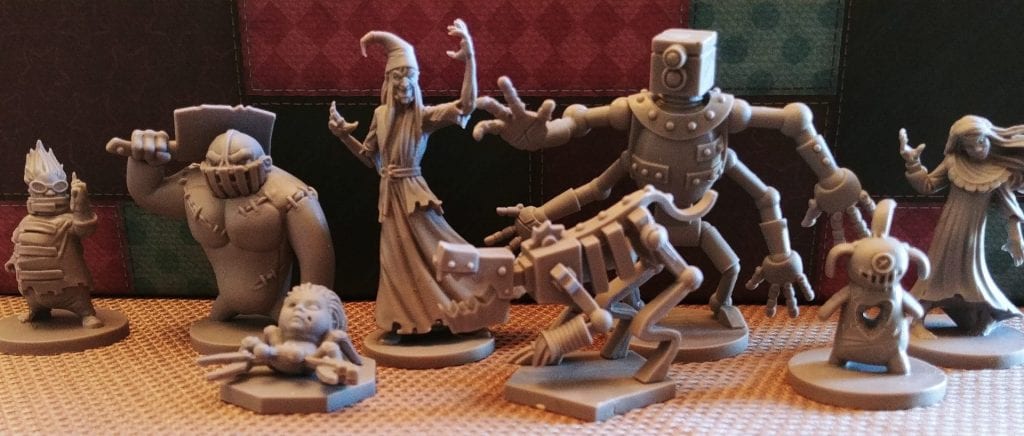
The dice mechanic is great. However, the colour of the dice are not true to the colours on the cards. The red is orange, and the purple is pink. The game also does not have another way to play for the colour-blind, something that companies are trying to be more aware of now. The rulebook needs to be read in advance of playing but it is clearly written and has a helpful glossary in the back in case any of the special rules need a quick refresh. 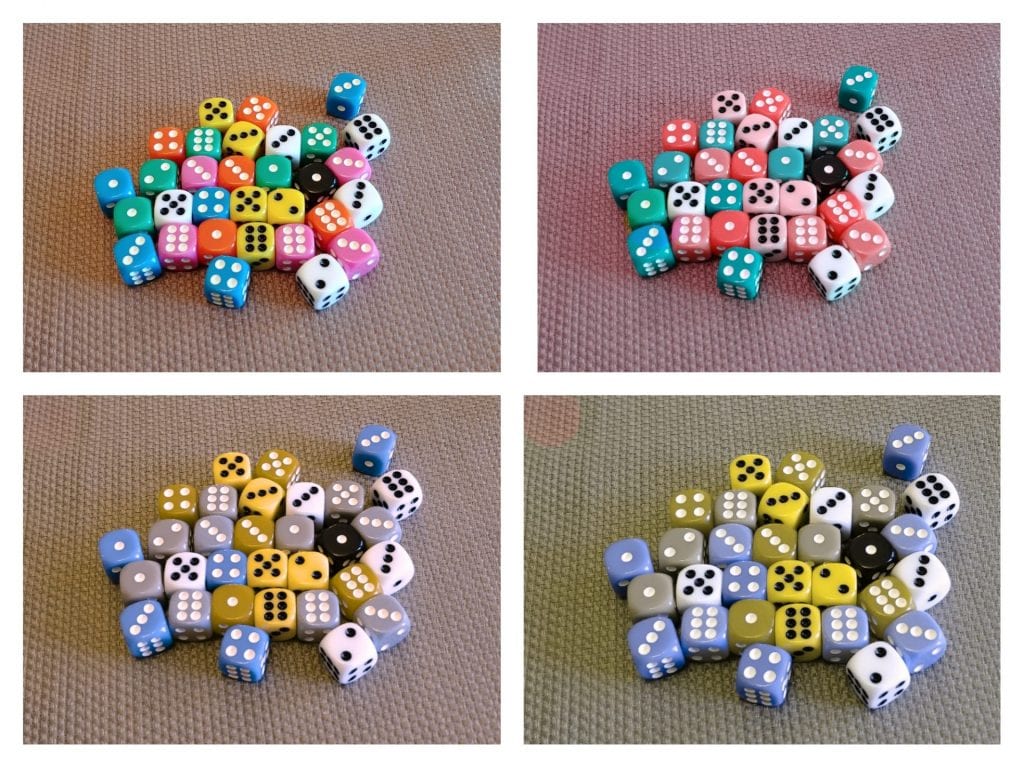
This illustrates the accessibility issues players may face if colour-blind. From top left to bottom right: non colour-blind lens, blue colour-blind, green-colourblind, and red colour-blind.
Reliving Dreams and Nightmares
Stuffed Fables does not have the same replayability as the typical family game. Each chapter only has two outcomes: a good or bad one. However, these outcomes can affect the order and sometimes completely skip parts of the campaign, so if players lose a chapter there is always the allure of finding out what could have happened differently in the story. The amount of playtime per scenario on the box says 30 to 60 minutes with only a few running longer than that. With smaller children the game can be broken up into smaller scenarios rather than finishing a chapter a day. Stuffed Fables is not something that should be blasted through in an afternoon and if played in a weekly campaign it can last up to seven weeks. A unique feature of Stuffed Fables are the short stories and end of chapter discussion questions that can extend the time spent with the game. At the end of each chapter there are discussion questions so families can digest the potentially heavy content of the game. Some of these questions seem a little old for younger age brackets but it allows parents a way to include discussions of tough topics with their children in a safe and fun environment.
Stuffed Fables is a great family game for both the young and old. There is enough inspiration from Tim Burton and Neil Gaiman to draw in players for Stuffed Fables visual style, the mechanics are fun and challenging so it does not feel like a ‘kids’ game and the story is engaging, keeping players wanting more. Stuffed Fables is an adventure well worth your time and money.












Thanks for sharing! I loved your insight into this game. I started playing with my wife and another couple on the weekends while our children run all around. Was looking for an interesting game that would get them into something cooperative so we could help each other figure it all out AND thought I could get my wife and the other gal in our group to play it because of the reading involved – they both enjoy reading and are part of book club.
Not sure how great it was received after going through scenario 1 and 2, but I think they will be willing to try it again. Once I am more familiar with all the rules – and can teach it clearly to them – they may be willing to go through the rest of the chapters.